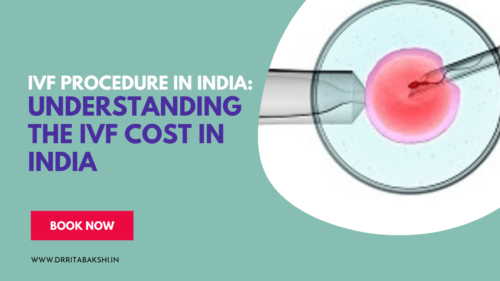In Vitro Fertilization (IVF) is a popular infertility treatment method used by couples struggling to conceive naturally. While the success rates of IVF in India are high, one of the major concerns for couples is the cost of the treatment. In this blog, we will explore the IVF cost in India and the factors that impact it.
What Is In-Vitro Fertilization?
Treatment for infertility and prevention of genetic disorders that could make pregnancy difficult are the two main goals of in vitro fertilisation (IVF). The process of fertilising an egg with sperm in a petri dish is known as “in vitro fertilisation” (IVF). Briefly put, it’s the process of surgically removing an egg or multiple eggs from an ovary and then fertilizing it in a laboratory dish. The fertilized egg or eggs are then reintroduced to the woman’s uterus.
Millions of couples are trying to conceive and have the option of undergoing IVF treatment. Both women and men over the age of 40 who are unable to have children can benefit from assisted reproductive technology. This procedure is extremely helpful for women with blocked or damaged fallopian tubes, as well as men with low sperm count or damaged sperm.

The cost of having a child through in vitro fertilization (IVF) can fluctuate widely. In contrast, the cost of IVF in Delhi, can range from INR 2.5 lakhs to INR 4 lakhs onwards. Further, you may need to spend more money on diagnostics, treatment, and surgery.
Who can go for IVF?
The decision to pursue IVF should be made in consultation with a fertility specialist, who will evaluate the individual’s medical history and fertility status to know if they can go for the procedure. Generally, the following individuals or couples may consider IVF as a treatment option:
1. Individuals with infertility issues: IVF is commonly used to treat infertility due to various reasons such as low sperm count, ovulation disorders, fallopian tube damage, endometriosis, and other factors that may prevent pregnancy from occurring naturally.
2. Women with age-related fertility issues: As women age, their fertility naturally declines. IVF can be an effective treatment option for women aged between 30 -40 who are experiencing age-related fertility issues.
3. Couples with unexplained infertility: In some cases, couples may not clearly explain why they are having difficulty conceiving. IVF can help these couples achieve pregnancy by bypassing any unexplained fertility issues.
4. Individuals with genetic disorders: Individuals with genetic disorders that may be passed on to their children can opt for IVF with pre-implantation genetic diagnosis (PGD), which involves testing embryos for genetic disorders before implantation.
Several Techniques for In Vitro Fertilization
Natural In Vitro Fertilization:
Natural IVF treatment will artificially collect multiple eggs and develop multiple embryos to increase your pregnancy odds. This method is considered “natural” because, unlike others that use drugs to simulate pregnancy, it actually helps your body select the best egg. Human egg-free IVF is preferred because it is more cost-effective and can be repeated as often as necessary.
This approach could be useful for women who have a low ovarian reserve or are having trouble conceiving. Young women with tubal issues can also benefit from this treatment. However, in a normal IVF cycle, only one embryo is transferred. The going rate for IVF Cost in India is around INR 2.5 lakhs to INR 4 lakhs onwards.
Combining IVF with the Use of Frozen Embryos:
The term “frozen embryo transfer” (FET) is used to describe the process of putting a previously frozen embryo or embryos into a woman’s uterus. FET is an option for women who wait until their late 30s or early 40s to start a family. However, the probability of becoming pregnant varies depending on a woman’s actual age. Women over 40 have a 20% chance of becoming pregnant after an embryo transfer, compared to 60% for those under 35.
Recipients of frozen embryo transfers must wait two weeks before the procedure can occur. Therefore, the processed results might be off.
ICSI with a solitary embryo transfer (eSET):
In order to start a family, a woman can choose an embryo from a collection and implant it into her fallopian tube. Even though IVF with ESET improves a woman’s chances of having a healthy baby, some women may still require additional embryo transplants. eSET also has fewer negative side effects, such as preterm birth, hypertension, and low birth weight. In addition, preventing ovarian hyperstimulation syndrome is an option (OHSS). Any other successful laboratory embryos are vitrified for long-term storage.
